
The Alla Famiglia restaurant was one of the pioneers in the ongoing revitalization of Allentown, and its owners have spiffed up this building beautifully. They have also expanded into the old movie theater next door.

Comments

The Alla Famiglia restaurant was one of the pioneers in the ongoing revitalization of Allentown, and its owners have spiffed up this building beautifully. They have also expanded into the old movie theater next door.


After months of work, the Hollywood, Dormont’s century-old neighborhood movie palace, is open again as the Row House Hollywood, showing an eclectic mixture of classic movies, cult films, and independent productions. As a rare undivided big-screen theater, the Hollywood is big enough to accommodate special performances, like a showing of Dreyer’s Passion of Joan of Arc with the Bach Choir of Pittsburgh.
Charles R. Geisler designed the original 1925 building (the Spanish Mission details are certainly his); Victor A. Rigaumont, Pittsburgh’s titan of Deco theaters, supervised a remodeling in 1948.

The Hollywood is an easy stroll from the Potomac station on the Red Line. There are also public parking lots nearby for the carbound, but isn’t half the fun of visiting a silent-era movie palace using a period-appropriate transit line to get there?


The Hollywood Theater in Dormont is one hundred years old this year, and it is near the end of a thorough refurbishment. It is now owned by the same people who own the successful Row House Theater in Lawrenceville, and it will open after the work with a similar mix of art films, cult films, and revivals. Comparing the picture above with one from 2019 shows how much can be accomplished with paint and some stucco work.

The original 1925 architect was Charles R. Geisler, who was prolific especially in the South Hills (he lived in Beechview within walking distance of this theater). His taste for Mission details is obvious in the roofline, with its very Geislery green-tiled overhangs. In 1948, Victor A. Rigaumont, Pittsburgh’s king of Deco movie houses, supervised a remodeling, and the spare and abstract ground floor is probably his work. This current remodeling uses dark green to link the ground floor with the roof and make the façade look more all of a piece.



The last time Father Pitt took a picture of the Natatorium Building, later the Strand Theatre, was ten years ago. Since then tenants have come and gone, and murals have appeared on the side. When old Pa Pitt walked past recently, some internal construction was going on, suggesting that the building is getting ready for its next adventure.

The architect of the original building, put up in 1907, was R. B. Melvin, who designed the high-class bathhouse with obvious references—especially in the arch over the entrance—to the Baths of Caracalla. Later, the building was remodeled as a movie theater by architect George Schwan.

The Atlas Theatre opened in 1915 as the Perrysville but was almost immediately put up for sale and renamed the Atlas. It was remodeled with Art Deco front in 1938. The last movie it showed, in 1953, was Bonzo Goes to College. Apparently that killed it. After that, it was a retail store for a while, but it has been many years since anything inhabited this building.
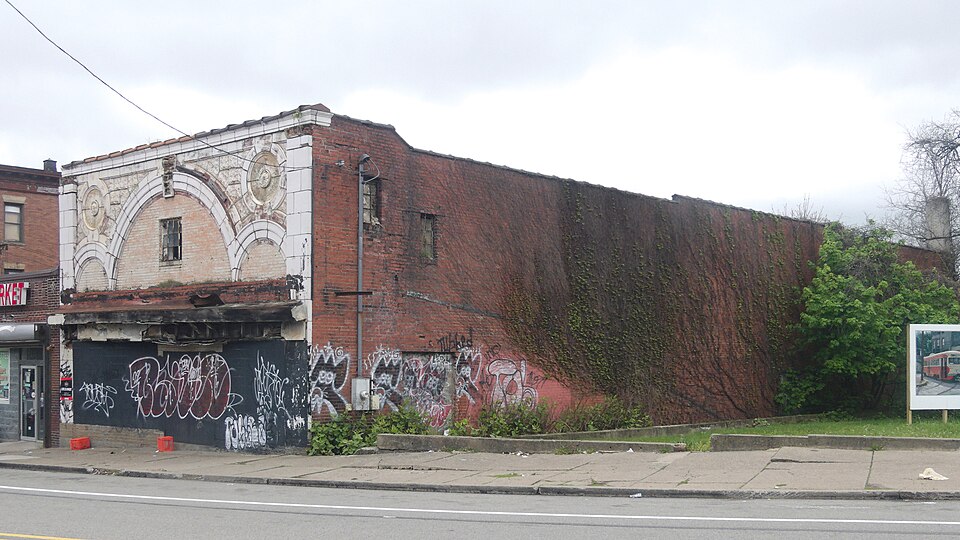
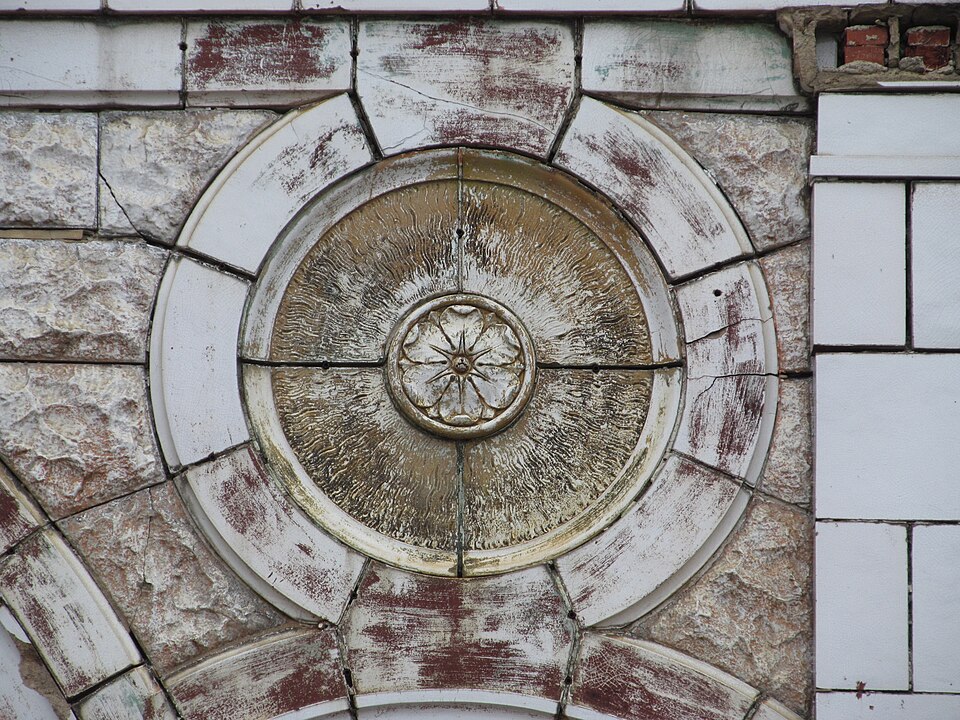
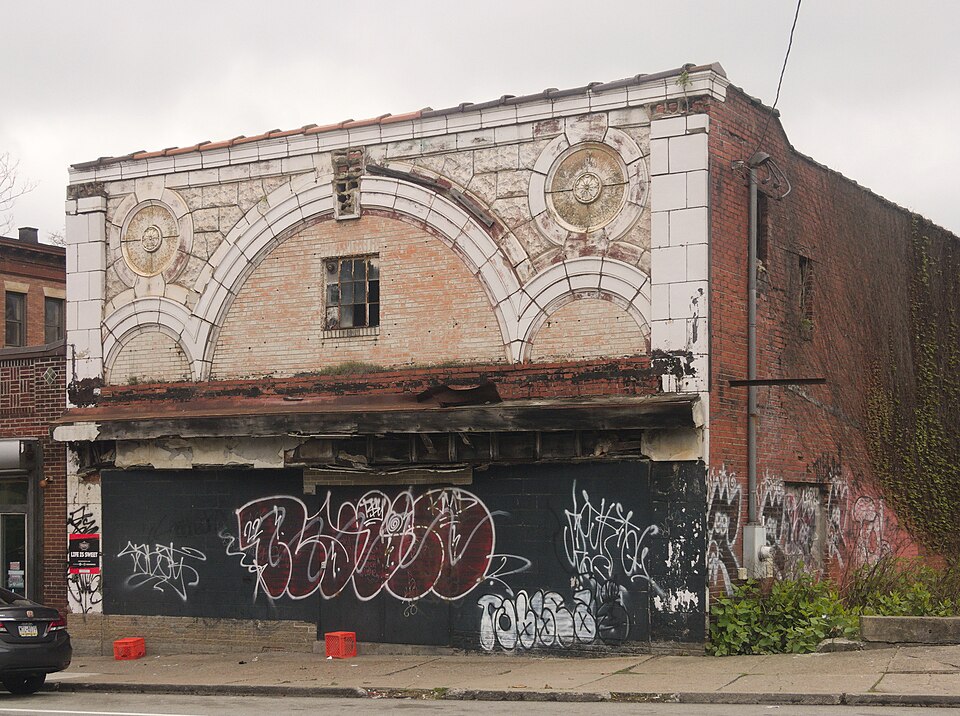
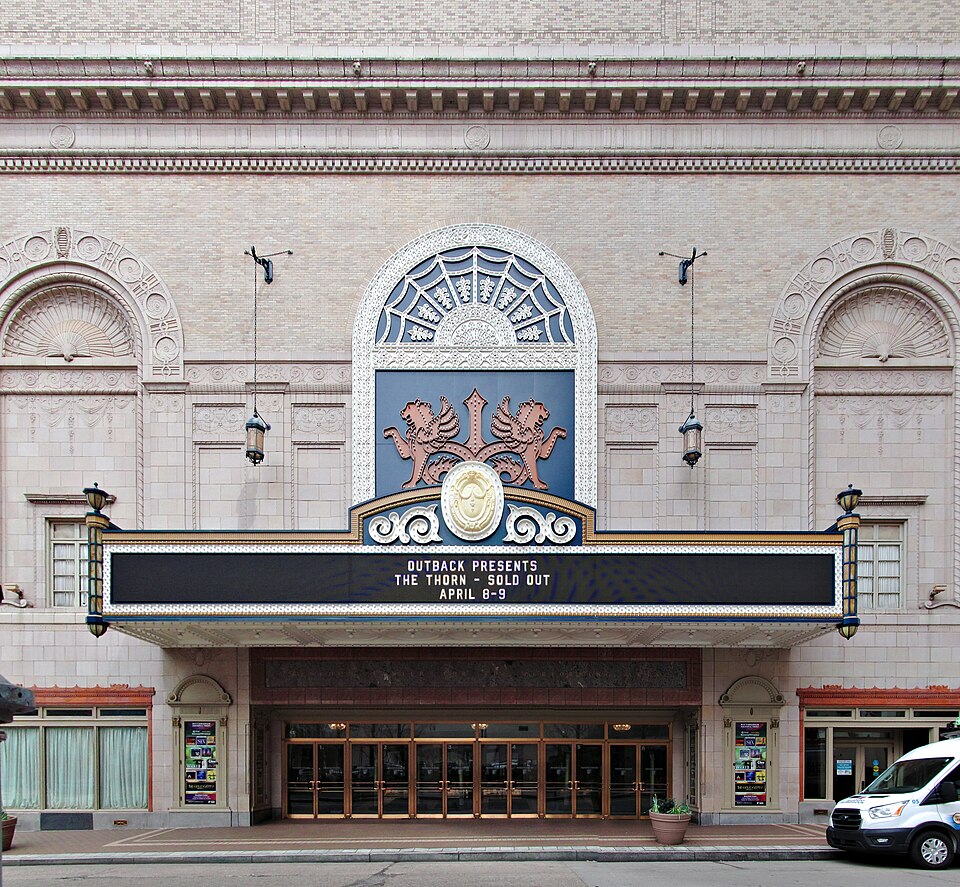
The Stanley was designed as a silent-movie palace, but opened in 1928, just as talkies were making a revolution in the movie business. The architects were the Hoffman-Henon Company of Philadelphia. It was the biggest theater in Pittsburgh when it opened, and as the Benedum Center for the Performing Arts it is still our biggest theater now.
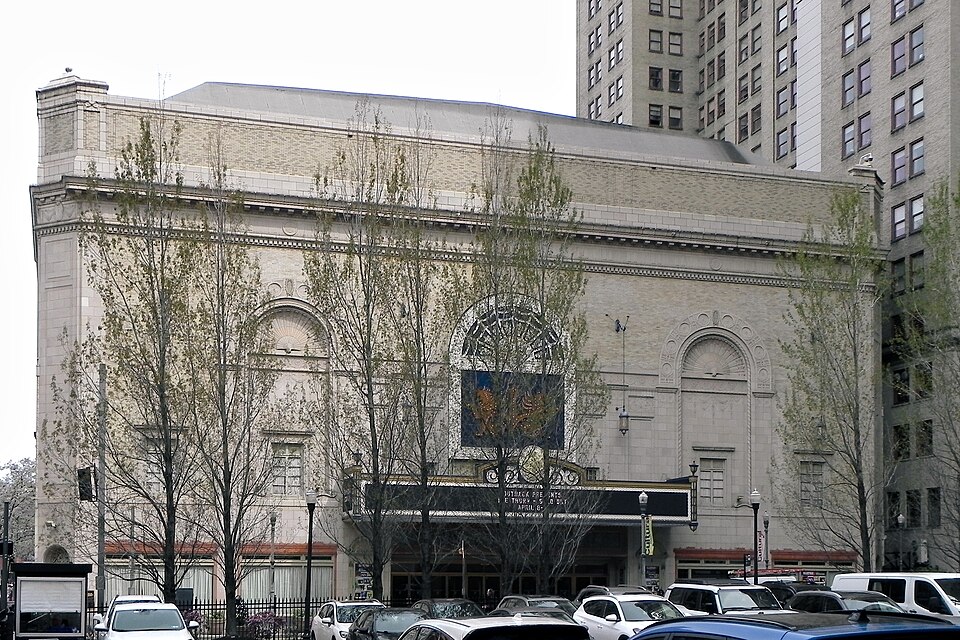

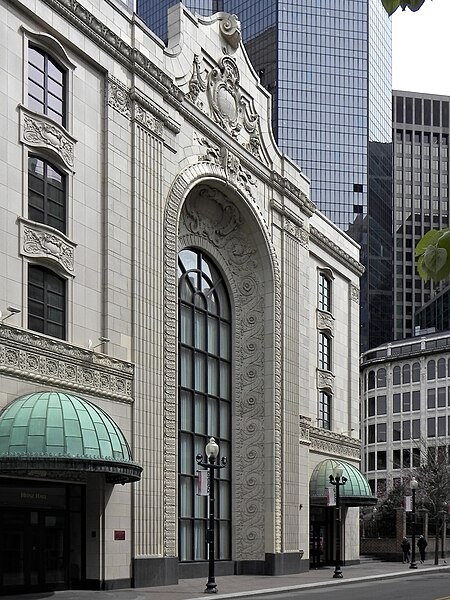
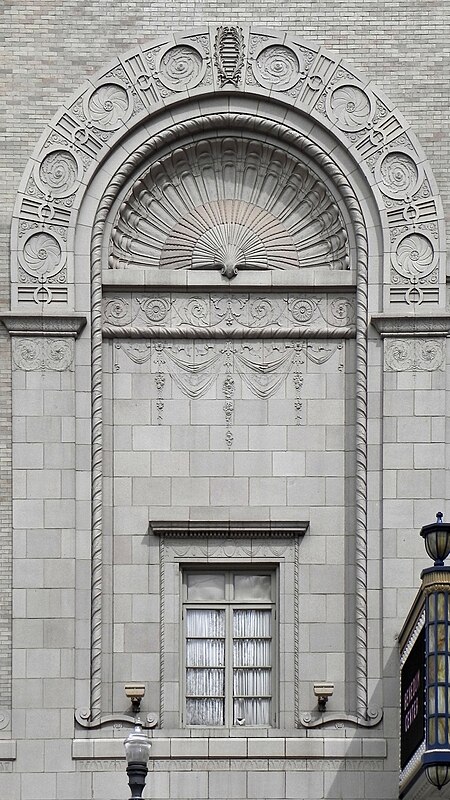
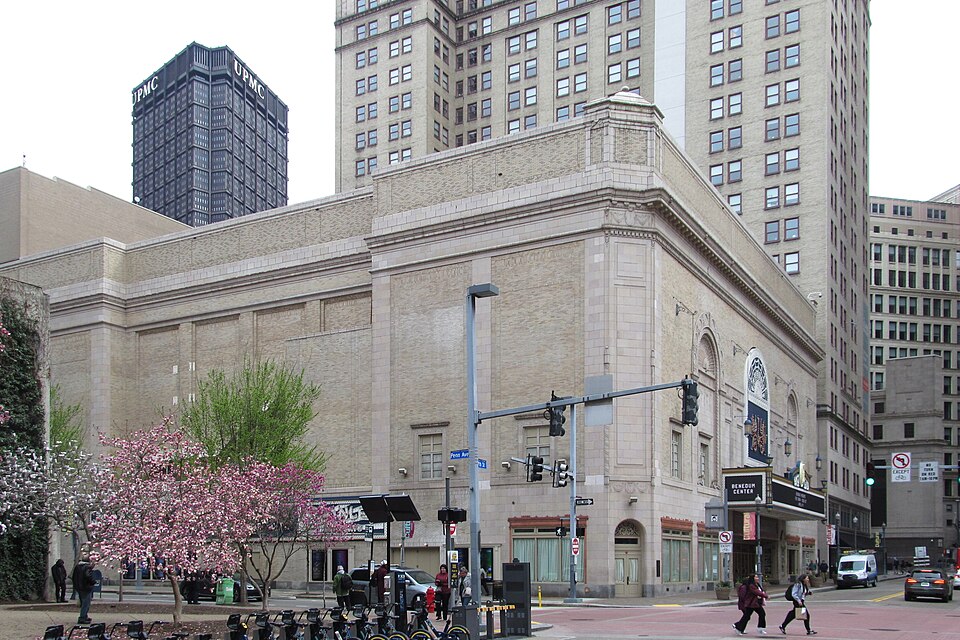
The skyscraper behind the theater is the Clark Building, which was built at the same time and designed by the same architects as part of the same development package.
More pictures of the Stanley Theater.
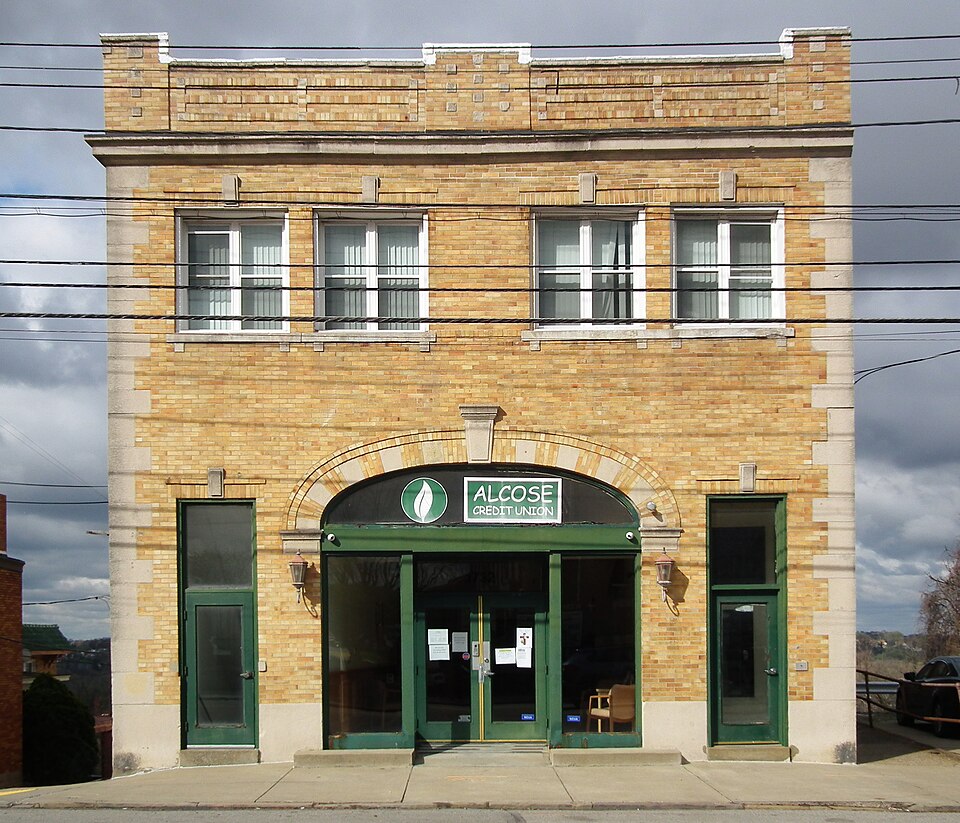
This building shows up as a theater on a 1916 map, and that is all Father Pitt knows about it.

It is not documented at Cinema Treasures, where theater fanatics have catalogued 178 theaters in Pittsburgh, or at the expiring and impossible-to-navigate Carrick-Overbrook Wiki, so it may not have lasted very long as a theater. (And Father Pitt is only making the assumption that it was a movie theater rather than a live theater or vaudeville house, because the latter seems much less likely for the era and place.) If anyone from the neighborhood knows the story of this building, the information will be received with gratitude. The building is well kept: it has been updated just enough to be useful to its current tenant without destroying the original design of the exterior.
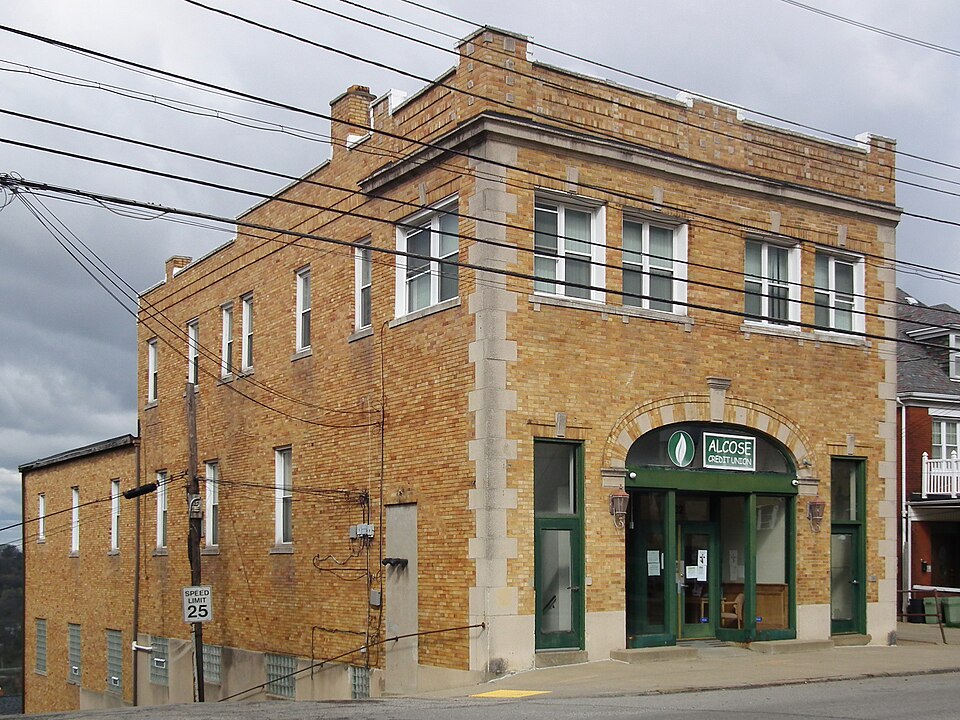
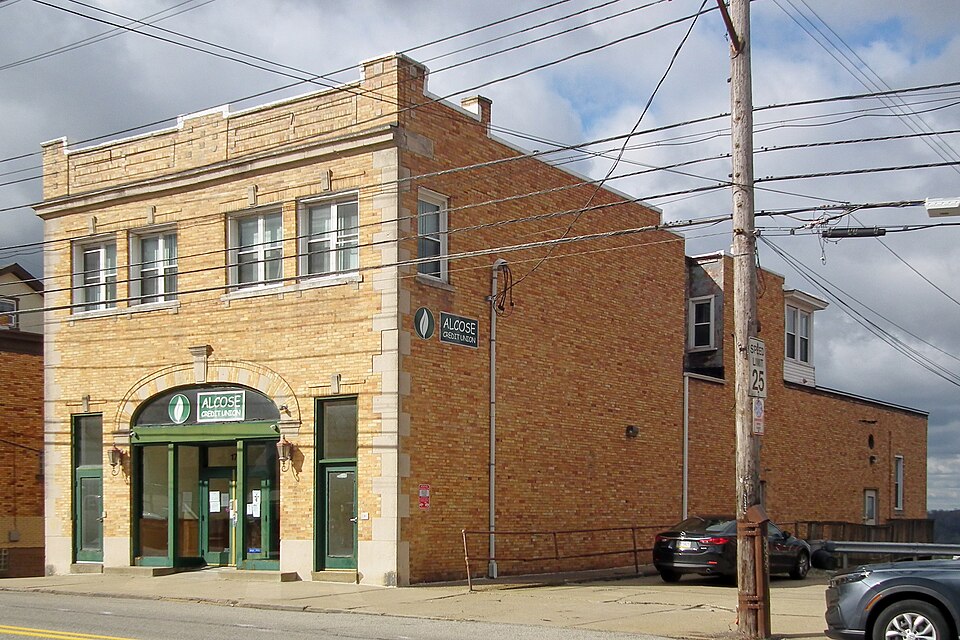

A quarter-century ago, the O’Reilly opened with a brand-new play by August Wilson (King Hedley II). That makes it a newcomer by Penn Avenue standards. But Penn Avenue has been the heart of the theater district for a century and a half, and the O’Reilly stands on the exact site of Library Hall, whose auditorium was used as the Bijou, Victorian Pittsburgh’s most prestigious theater, where touring stars like Dion Boucicault played. The site had been a parking lot for more than sixty years before the O’Reilly was built, but we can think of this theater as continuing the Bijou tradition.
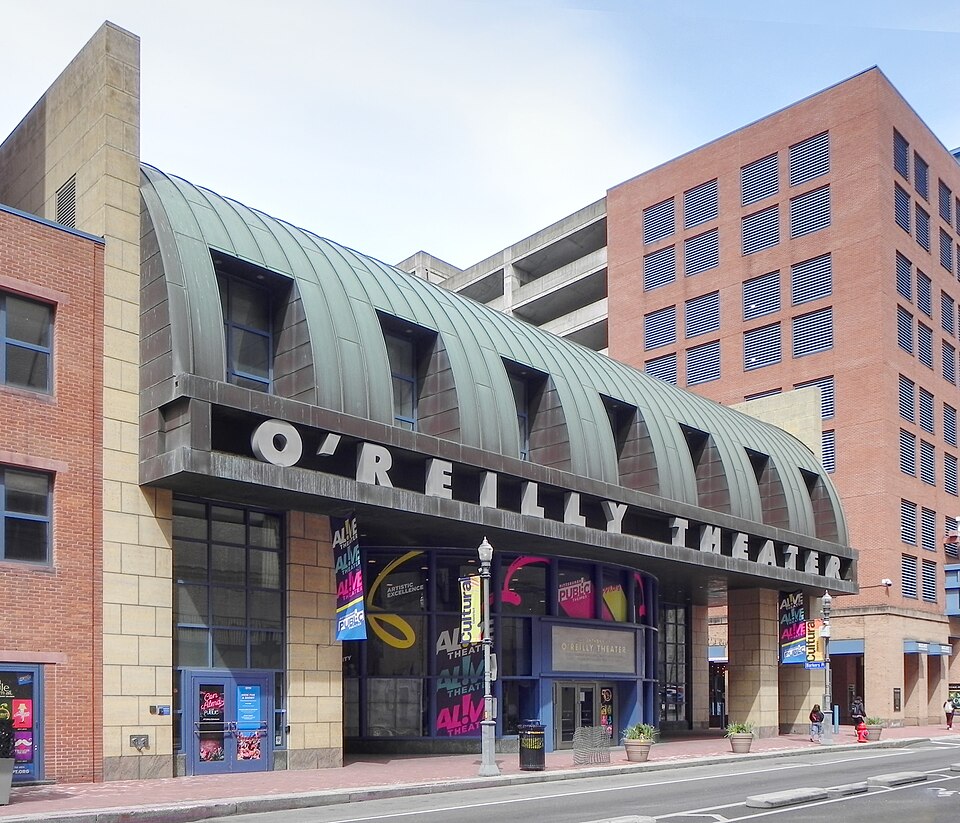
The building was designed by Michael Graves, the postmodernist whose brand of neoneoclassicism was influential in the movement. Mr. Graves also designed Theater Square next door, which houses the Greer Cabaret and a well-dressed parking garage.

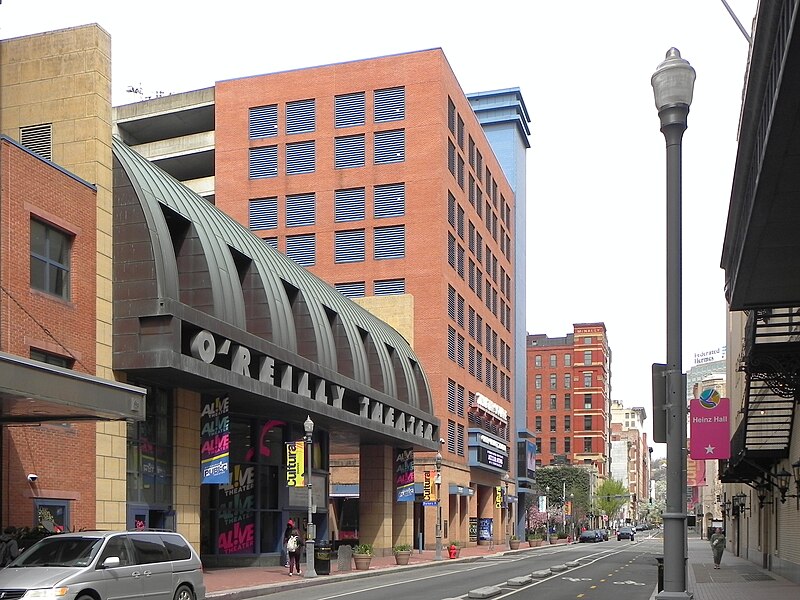
Old Pa Pitt has been dumping quite a load of pictures in these pages for the past few days. He realized that the pictures have been backing up and decided he ought to try to catch up with them. But how backed up were they? Here is a picture of the O’Reilly taken with a Kodak Signet 40 in June of 2000, when the building was only six months old. Father Pitt has never published it here before.
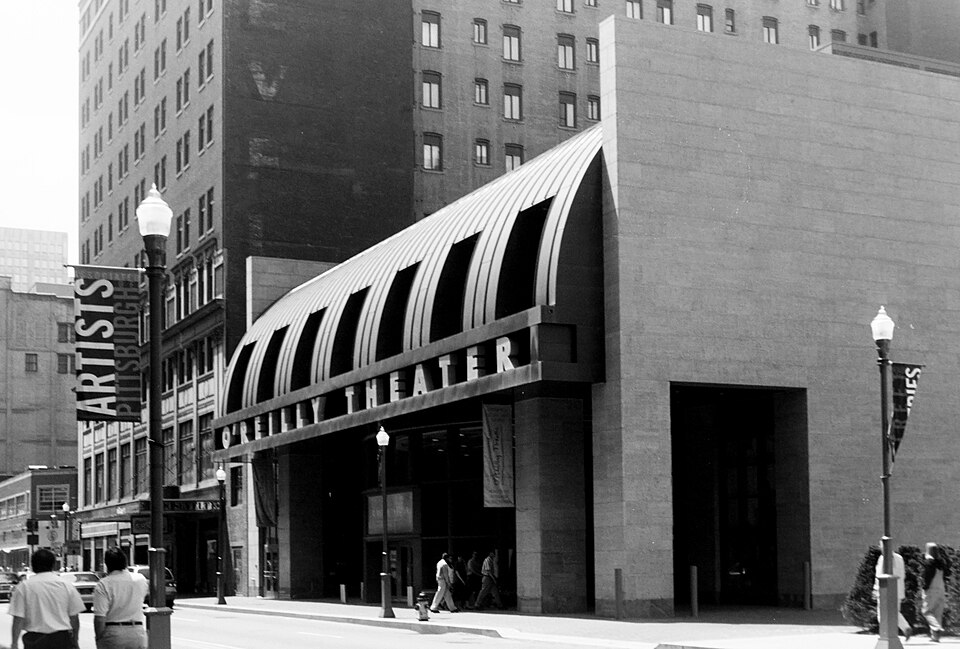
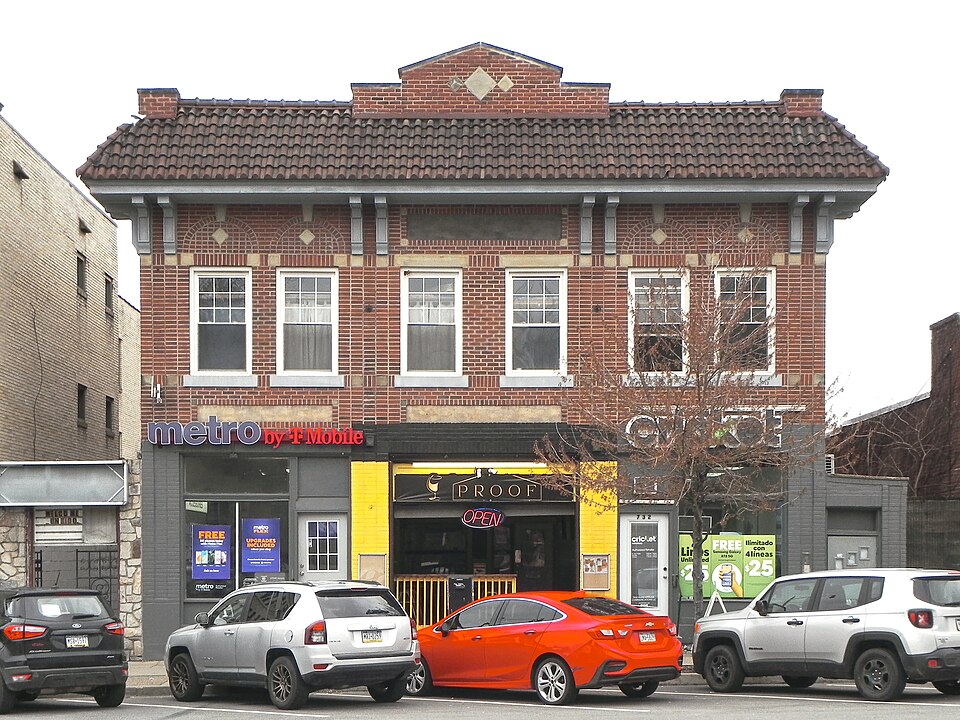
The Brookline Theatre on Brookline Boulevard in Brookline was a typical neighborhood movie house of the silent era. According to Ed Blank, the well-known newspaper critic, who has made a thorough study of Pittsburgh movie houses, it opened on March 28, 1921. It ceased to show movies about half a century ago, and since then has had a varied career as a thrift shop, a bar, and currently a sports bar with two competing cell-phone dealers. The Mission style of the building, with its tiled overhang and exaggerated wooden brackets, was popular in the 1920s, especially in the South Hills neighborhoods.
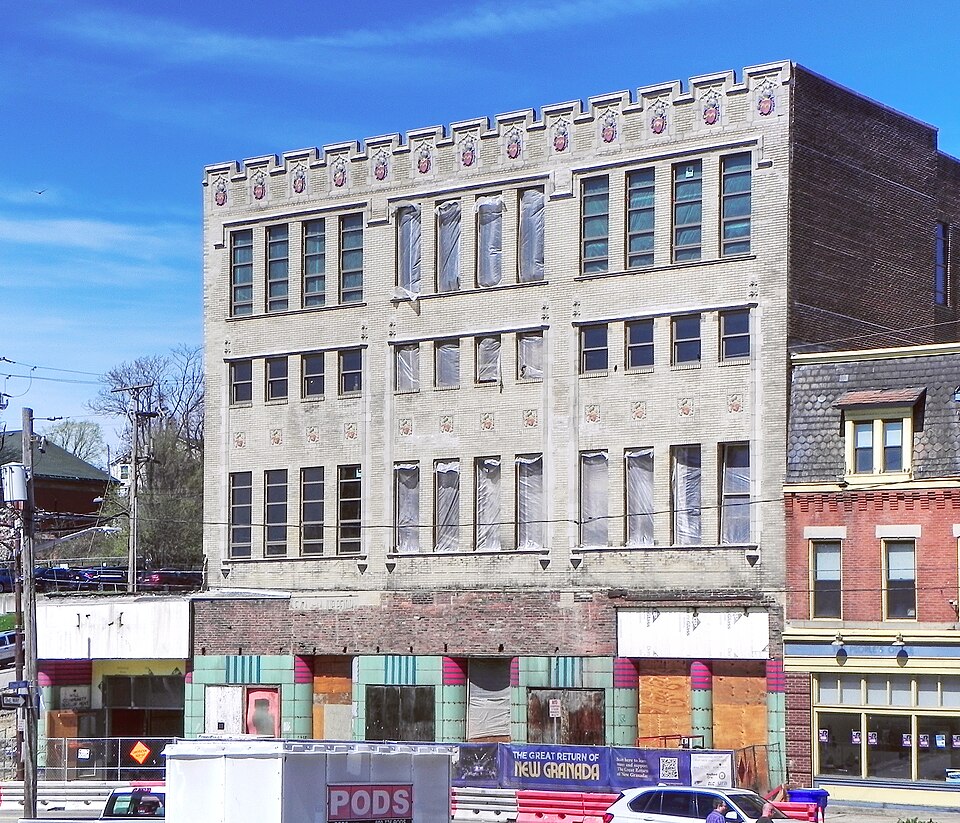
This is the most important remaining work of Louis Bellinger, who for his entire career was the only Black architect in Western Pennsylvania. It was built as the Pythian Temple, an exceptionally grand lodge house. It opened in 1928; but after less than ten years it was sold and became a movie theater, the New Granada, with the ground floor redesigned in streamlined Art Deco by Marks & Kann. Both as a lodge and as a theater it was one of the great jazz venues of all time, and the roster of stars who performed here is long and dazzling—Cab Calloway, Louis Armstrong, Duke Ellington, and our own Lena Horne, just to name four.
After half a century of vacancy and multiple schemes for restoration, the New Granada is finally getting the love it deserves. It will have performance spaces and offices, and the whole block has been redeveloped with colorful new apartments and restored older buildings.
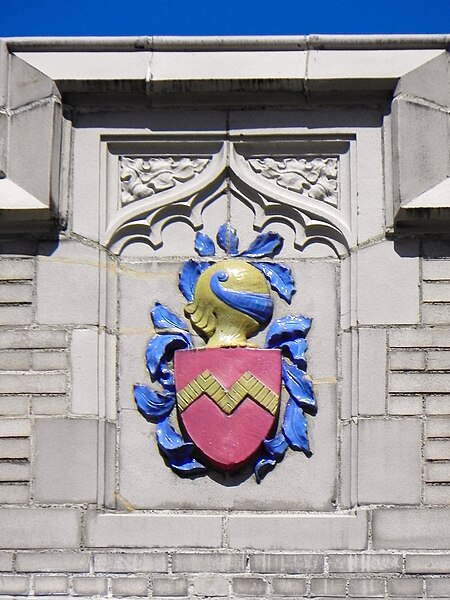
Except for the ground floor, the building still stands very much as Bellinger designed it. Shields and helmets in terra cotta remind us of the building’s Knights of Pythias origins.
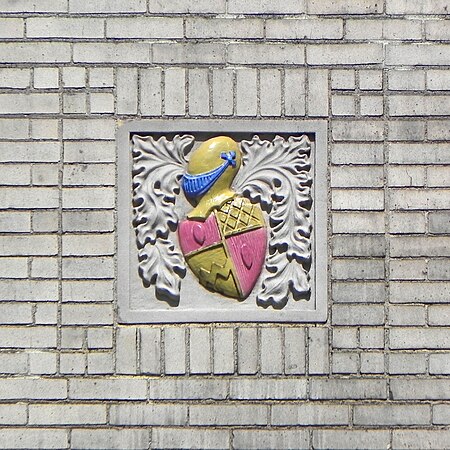
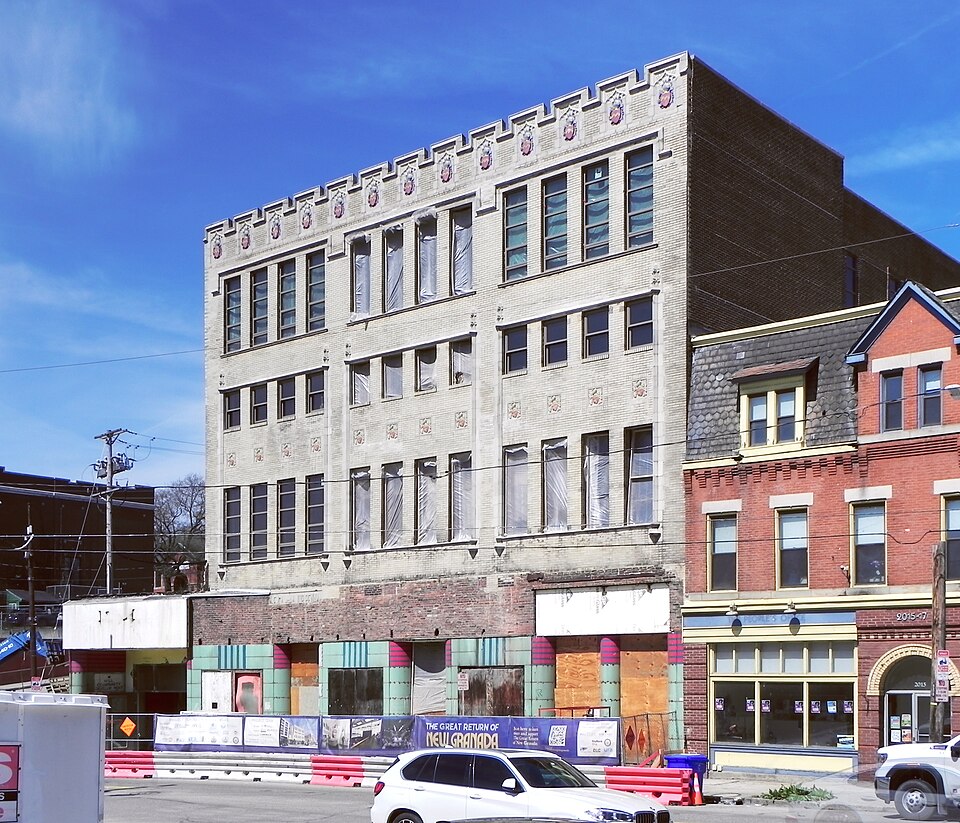
In seventeen and a half years of writing about Pittsburgh, few things have made old Pa Pitt happier than seeing the progress on this building. It will stand for years as a tribute to a neglected architect, to the history of the Hill, and to the great legacy of jazz in Pittsburgh.